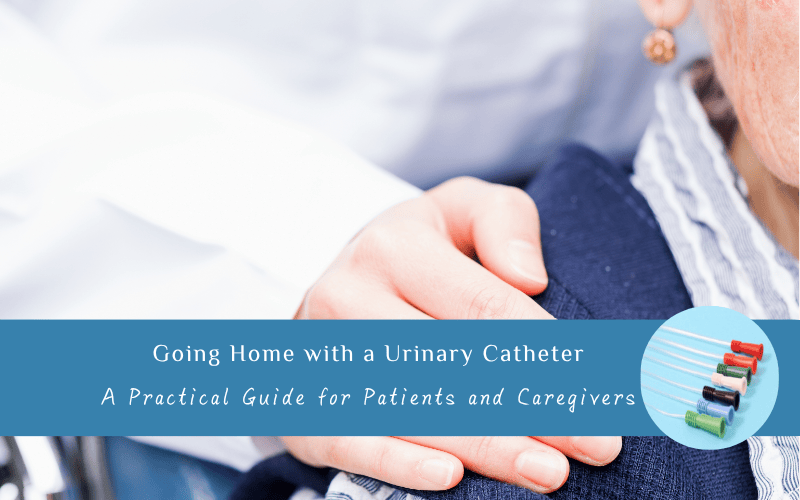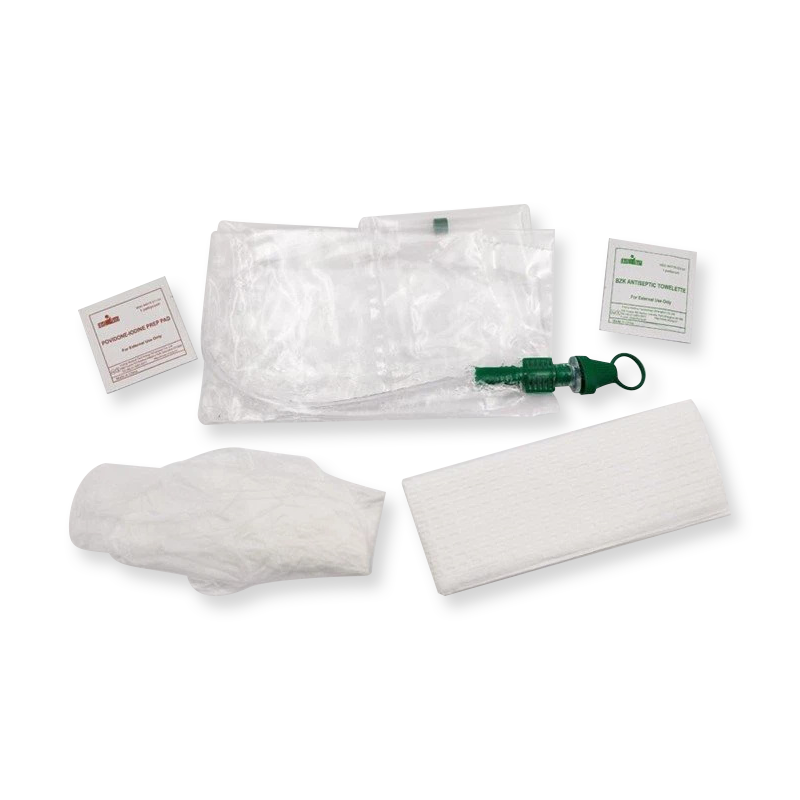TEl: +86-13148388090
Fax:+86-571-88616515
Going Home with a Urinary Catheter: A Practical Guide for Patients and Caregivers
Author: admin / 2025-11-03Going home with a urinary catheter can feel intimidating at first. For many, the idea of managing a medical device at home raises questions about hygiene, comfort, and safety. However, with proper understanding, the right equipment, and consistent care routines, living with a catheter at home is entirely manageable, and it can even support recovery and independence.

Understanding Urinary Catheters
A urinary catheter is a thin, sterile tube inserted into the bladder to allow urine to drain when natural urination is not possible or safe. Catheters come in several types:
- Indwelling (Foley) catheters: These remain in place for several days or weeks, secured by a small balloon inside the bladder. Urine flows continuously into a drainage bag.
- Suprapubic catheters: Inserted through a small abdominal opening, these offer an alternative route when urethral insertion is not suitable.·
- Intermittent catheters: Single-use devices that are inserted only when the bladder needs emptying and then removed.·
- Female external catheters: Non-invasive options that fit outside the body, often used for short-term management.
Knowing which type you have is crucial for proper care and preventing complications.
Preparing for Home Care
Before leaving the hospital, ensure you or your caregiver understand how to manage the catheter. Key points include:
- Hand hygiene: Always wash hands thoroughly before and after touching the catheter, tubing, or drainage bag. This is the most important step to prevent infection.
- Insertion site care: Clean the area around the catheter daily with mild soap and water. Female patients should clean from front to back to reduce bacterial contamination.
- Bag and tubing management: The drainage bag should hang below bladder level at all times to allow urine to drain properly. Ensure tubing is free from kinks or pressure, and empty the bag when it is about two-thirds full.
Choosing the Right Equipment
High-quality catheter equipment makes home care easier and safer. Pre-lubricated, hydrophilic catheters reduce friction during insertion and minimize discomfort, especially for self-catheterization. Closed systems, which include an integrated drainage bag, limit handling of urine and reduce infection risk. Some kits include a catheter, sterile water for lubrication, and a collection bag, providing everything needed for safe home use.
For female patients, external or specialized intermittent catheters can offer comfort and make daily management simpler. Selecting equipment appropriate for your needs — considering factors like mobility and dexterity — is essential to maintaining independence at home.
Daily Care and Hygiene
Maintaining hygiene and following proper routines are essential:
- Hand washing: Always before and after touching any part of the catheter system.
- Skin care: Clean the area around the catheter gently each day. Avoid harsh or scented soaps.
- Bag care:Empty the drainage bag regularly, usually when it reaches two-thirds capacity. Ensure tubing is not compressed or kinked.
- Hydration: Drink adequate fluids (unless restricted by your doctor) to keep urine flowing and reduce infection risk.
For intermittent catheters, avoid touching the tip or insertion end. For indwelling catheters, keep the balloon and tubing stable, avoid twisting, and ensure leg straps are snug but not tight.
Monitoring for Problems
Even with careful care, it is important to be aware of warning signs:
- Little or no urine output despite feeling the bladder is full
- Cloudy, foul-smelling, or bloody urine
- Pain, swelling, or redness around the catheter site
- Fever, chills, or general malais
- Catheter displacement or blockage
Contact a healthcare professional immediately if any of these occur. Early intervention can prevent serious complications such as urinary tract infections or bladder injury.
Tips for Comfort and Independence
Managing a catheter at home doesn't mean limiting your lifestyle. Consider these tips:
- Keep a log: Track when you empty the bag, change tubing, or notice any issues.
- Mobility: Ensure tubing has enough slack for walking, sitting, and daily activities. Avoid sharp bends or pressure that could block flow.
- Supplies:Keep extra drainage bags, tubing, and catheters at home for emergencies.
- Travel: Plan for restroom access, carry spare supplies, and maintain hygiene when away from home.
Confidence grows with experience. Many patients report that after a few days or weeks, home catheter management becomes a routine part of daily life.
Psychological Considerations
It is normal to feel anxious or self-conscious when first using a catheter at home. Patience, structured routines, and support from family or caregivers help reduce stress. Open communication with healthcare providers can clarify uncertainties and reinforce confidence in self-care.
Recommended Catheter Solutions from BEVER Medical
For patients and caregivers seeking reliable and comfortable options, BEVER Medical offers several specialized products:
Pediatric Closed System Intermittent Catheter Kit
Designed for children, this all-in-one kit helps kids, parents, or caregivers perform intermittent catheterization conveniently and safely. The closed system reduces handling and contamination risk, making the process easier for young users.
Male Hydrophilic Coated Intermittent Catheter
Featuring a hydrophilic coating, sterile water sachet, and no-touch handling sleeve, this catheter allows preparation, use, and disposal without direct contact, enhancing hygiene and comfort.
Made from DEHP-free PVC, it features polished eyelets and smooth edges to minimize irritation. A colored funnel provides a secure grip while reducing unnecessary contact, and lubricant jelly can be used to facilitate insertion, ensuring a comfortable and safe catheterization experience.
These products demonstrate how modern catheter design can support independence, hygiene, and comfort for patients of all ages and genders, making home catheter care simpler and safer.
Final Thoughts
With the right knowledge, equipment, and routines, living with a urinary catheter at home is manageable and safe. Understanding your catheter type, maintaining hygiene, monitoring for problems, and using high-quality devices like those from BEVER Medical can help you maintain independence, confidence, and a normal lifestyle.
Remember, your healthcare team is your partner. Stay informed, stay proactive, and with consistent care, a home urinary catheter can become a routine tool for recovery and long-term well-being rather than a source of anxiety.





